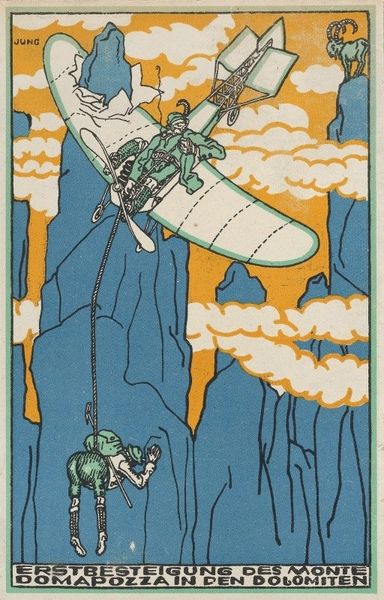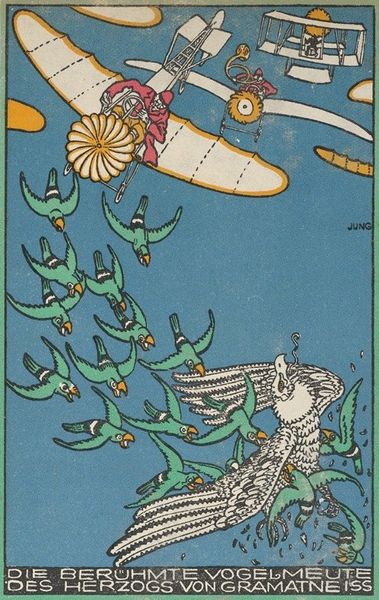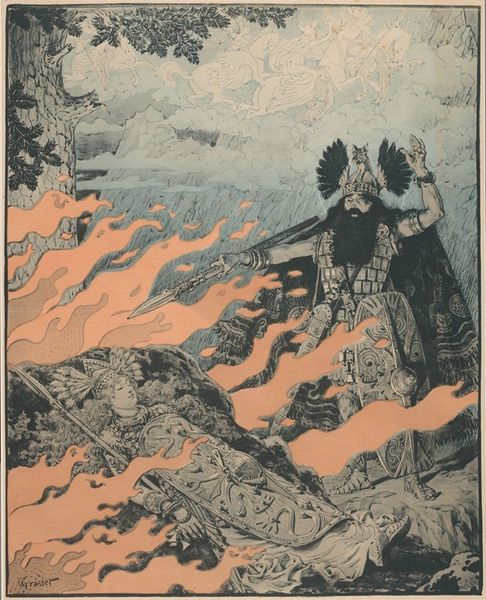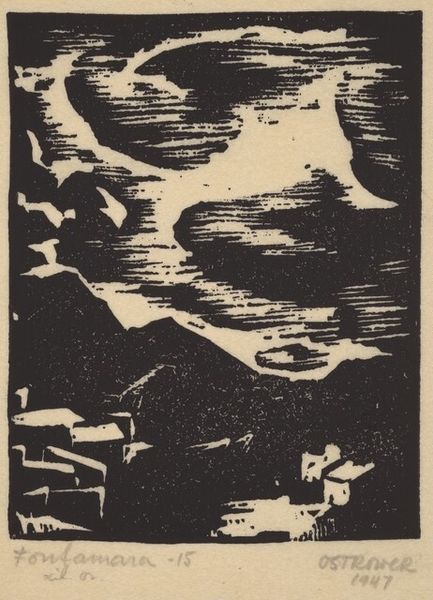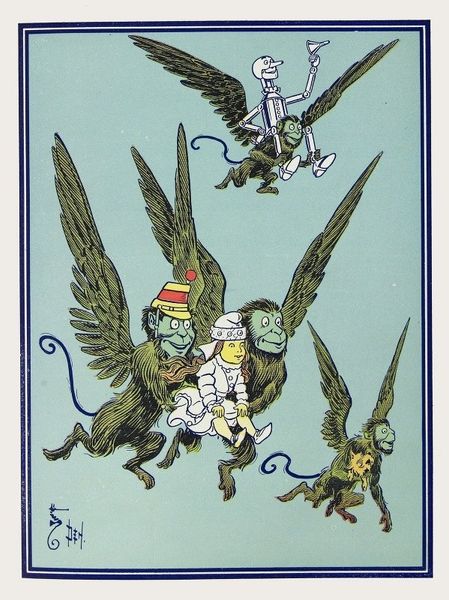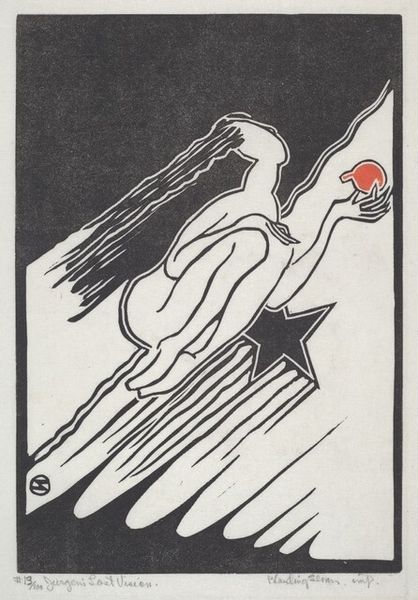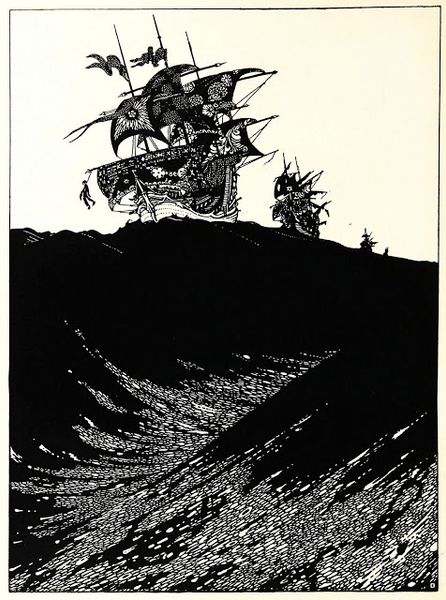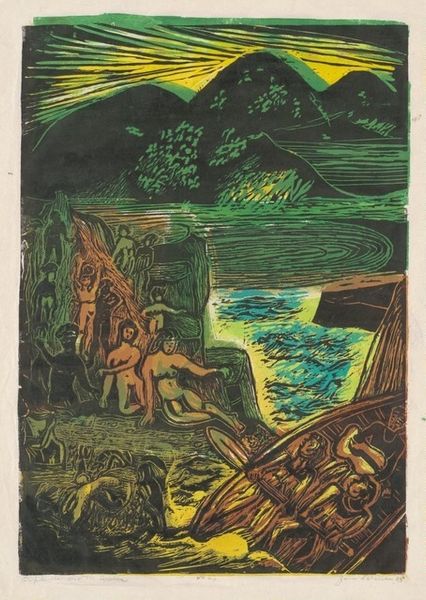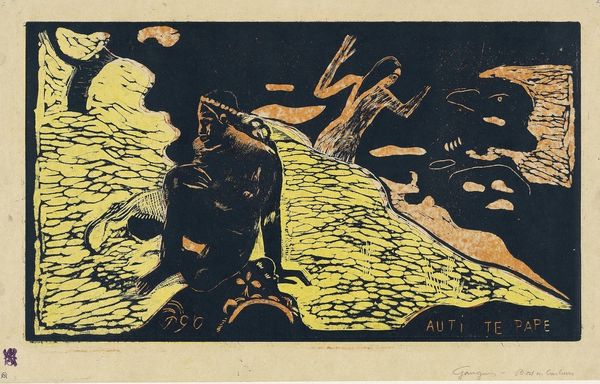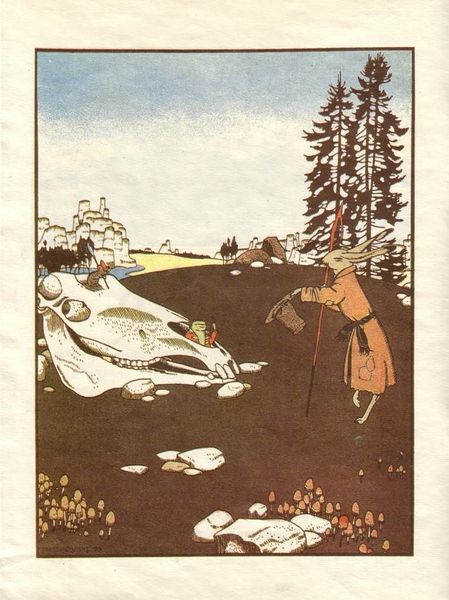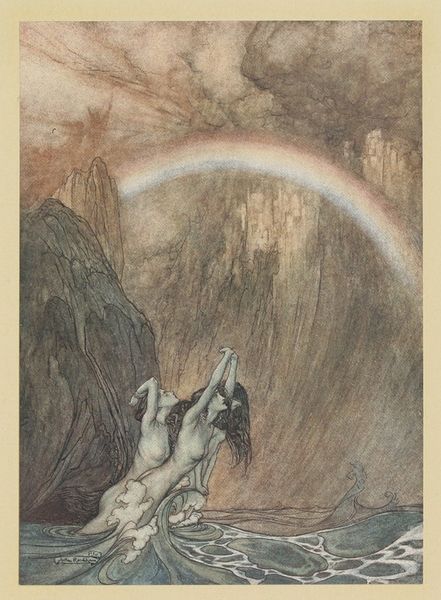
graphic-art, print, poster
#
graphic-art
#
art-nouveau
# print
#
landscape
#
pop art
#
german-expressionism
#
figuration
#
cityscape
#
cartoon style
#
poster
Copyright: Public Domain: Artvee
Editor: So, this is Moriz Jung’s "Rainbow Obstacle" from 1911, a graphic art print. The overall feeling I get is… whimsical, yet there’s a chaotic element. What strikes me is how he positions these two scenes, upside down from each other and connected by a rainbow. How do you interpret this work? Curator: The rainbow serves not just as a connector but as a bridge between different psychological states. Note the figures. The rider is cast from the sky and then reborn from below—it's the hero's journey in condensed symbolic form. He’s literally and figuratively facing obstacles in both realms. Editor: Obstacles like the rainbow, which is typically a symbol of hope? That feels a bit cynical. Curator: It’s more nuanced than that. Think of rainbows in folklore—promises, yes, but also illusions, ends of the earth. Jung places that classical tension in a modern setting. This isn’t a classical, reassuring landscape; it's a world grappling with modernity, visually echoed through German Expressionism's distorted forms. The rainbow is now something to overcome, not just admire. Where do you think this falls, symbolically, in light of figuration? Editor: So, instead of a romantic view, it's a symbol of the struggles and the disjointedness of modern life? It definitely makes me reconsider my initial lighthearted read. Curator: Precisely. And think, too, of the German Expressionist movement questioning societal norms, and its impact during the rise of political disruption in Europe. Images carried profound cultural weight, consciously and unconsciously, even within seemingly 'whimsical' styles. Editor: That's fascinating! I'm now thinking about the symbols and social critique present even when I least expected it. Curator: Exactly, it reveals that visual language and artistic expression is often multilayered and has connections across the conscious and unconscious elements of the artist and culture it was borne out of.
Comments
No comments
Be the first to comment and join the conversation on the ultimate creative platform.
